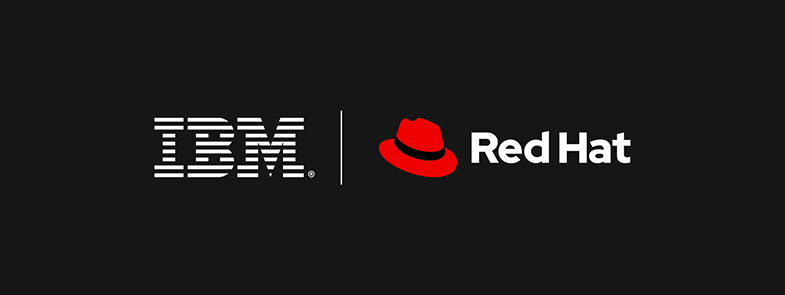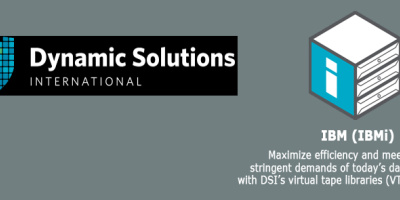Newly expanded software-defined storage portfolio enables IBM to deliver a consistent experience from edge-to-core-to-cloud
IBM announced today it will add Red Hat storage product roadmaps and Red Hat associate teams to the IBM Storage business unit, bringing consistent application and data storage across on-premises infrastructure and cloud.
With the move, IBM will integrate the storage technologies from Red Hat OpenShift Data Foundation (ODF) as the foundation for IBM Spectrum Fusion. This combines IBM and Red Hat's container storage technologies for data services and helps accelerate IBM's capabilities in the burgeoning Kubernetes platform market.
In addition, IBM intends to offer new Ceph solutions delivering a unified and software defined storage platform that bridges the architectural divide between the data center and cloud providers. This further advances IBM's leadership in the software defined storage and Kubernetes platform markets.
According to Gartner, by 2025, 60% of infrastructure and operations (I&O) leaders will implement at least one of the hybrid cloud storage architectures, which is a significant increase from 20% in 2022.1 IBM's software defined storage strategy is to take a "born in the cloud, for the cloud" approach—unlocking bi-directional application and data mobility based on a shared, secure, and cloud-scale software defined storage foundation.
"Red Hat and IBM have been working closely for many years, and today's announcement enhances our partnership and streamlines our portfolios," said Denis Kennelly, general manager of IBM Storage, IBM Systems. "By bringing together the teams and integrating our products under one roof, we are accelerating the IBM's hybrid cloud storage strategy while maintaining commitments to Red Hat customers and the open-source community."
"Red Hat and IBM have a shared belief in the mission of hybrid cloud-native storage and its potential to help customers transform their applications and data," said Joe Fernandes, vice president of hybrid platforms, Red Hat. "With IBM Storage taking stewardship of Red Hat Ceph Storage and OpenShift Data Foundation, IBM will help accelerate open-source storage innovation and expand the market opportunity beyond what each of us could deliver on our own. We believe this is a clear win for customers who can gain a more comprehensive platform with new hybrid cloud-native storage capabilities."
As customers formulate their hybrid cloud strategies, critical to success is the emphasis and importance of infrastructure consistency, application agility, IT management and flexible consumption consistency as deciding factors to bridge across on-premises and cloud deployments.
With these changes to the IBM portfolio, clients will have access to a consistent set of storage services while preserving data resilience, security, and governance across bare metal, virtualized and containerized environments. Some of the many benefits of the software defined portfolio available from IBM will include:
- A unified storage experience for all containerized apps running on Red Hat OpenShift: Customers can use IBM Spectrum Fusion (now with Red Hat OpenShift Data Foundation) to achieve the highest levels of performance, scale, automation, data protection, and data security for production applications running on OpenShift that require block, file, and/or object access to data. This enables development teams to focus on the apps, not the ops, with infrastructure-as-code designed for simplified, automated managing and provisioning.
- A consistent hybrid cloud experience at enterprise levels of scale and resiliency with IBM Ceph: Customers can deliver their private and hybrid cloud architectures on IBM's unified and software defined storage solution, providing capacity and management features. Capabilities include data protection, disaster recovery, high availability, security, auto-scaling, and self-healing portability, that are not tied to hardware, and travel with the data as it moves between on-premises and cloud environments.
- A single data lakehouse to aggregate and derive intelligence from unstructured data on IBM Spectrum Scale: Customers can address the challenges that often come with quickly scaling a centralized data approach with a single platform to support data-intensive workloads such as AI/ML, high performance computing, and others. Benefits can include less time and effort to administer, reduced data movement and redundancy, direct access to data for analytics tools, advanced schema management and data governance, all supported by distributed file and object storage engineered to be cost effective.
- Build in the cloud, deploy on-premises with automation: Customers can move developed applications from the cloud to on-premises services, automate the creation of staging environments to test deployment procedures, validate configuration changes, database schema and data updates, and ready package updates to overcome obstacles in production or correct errors before they become a problem that affects business operations.
"IBM and Red Hat speaking with one voice on storage is delivering the synergies derived from IBM's Red Hat acquisition," said Ashish Nadkarni, group vice president and general manager, Infrastructure Systems at IDC. "The combining of the two storage teams is a win for IT organizations as it brings together the best that both offer: An industry-leading storage systems portfolio meets an industry-leading software-defined data services offering. This initiative enables IBM and Red Hat to streamline their family of offerings, passing the benefits to their customers. It also helps accelerate innovation in storage to solve the data challenges for hybrid cloud, all while maintaining their commitment to open source."
Preserving commitment to Red Hat clients and the community
Under the agreement between IBM and Red Hat, IBM will assume Premier Sponsorship of the Ceph Foundation, whose members collaborate to drive innovation, development, marketing, and community events for the Ceph open-source project. IBM Ceph and Red Hat OpenShift Data Foundation will remain 100% open source and will continue to follow an upstream-first model, reinforcing IBM's commitment to these vital communities. Participation by the Ceph leadership team and other aspects of the open-source project is a key IBM priority to maintain and nurture ongoing Red Hat innovation.
Red Hat and IBM intend to complete the transition by January 1, 2023, which will involve the transfer of storage roadmaps and Red Hat associates to the IBM Storage business unit. Following this date, Red Hat OpenShift Platform Plus will continue to include OpenShift Data Foundation, sold by Red Hat and its partners. Additionally, Red Hat OpenStack customers will still be able to buy Red Hat Ceph Storage from Red Hat and its partners. Red Hat OpenShift and Red Hat OpenStack customers with existing subscriptions will be able to maintain and grow their storage footprints as needed, with no change in their Red Hat relationship.
Forthcoming IBM Ceph and IBM Spectrum Fusion storage solutions based on Ceph are expected to ship beginning in the first half of 2023.
Read more about today's news in this blog from Denis Kennelly, general manager of IBM Storage, IBM Systems: "IBM + Red Hat: Doubling Down on Hybrid Cloud Storage"
Statements regarding IBM's future direction and intent are subject to change or withdrawal without notice and represent goals and objectives only. Red Hat, Ceph, Gluster and OpenShift are trademarks or registered trademarks of Red Hat, Inc. or its subsidiaries in the U.S. and other countries.






















 More than ever, there is a demand for IT to deliver innovation. Your IBM i has been an essential part of your business operations for years. However, your organization may struggle to maintain the current system and implement new projects. The thousands of customers we've worked with and surveyed state that expectations regarding the digital footprint and vision of the company are not aligned with the current IT environment.
More than ever, there is a demand for IT to deliver innovation. Your IBM i has been an essential part of your business operations for years. However, your organization may struggle to maintain the current system and implement new projects. The thousands of customers we've worked with and surveyed state that expectations regarding the digital footprint and vision of the company are not aligned with the current IT environment. TRY the one package that solves all your document design and printing challenges on all your platforms. Produce bar code labels, electronic forms, ad hoc reports, and RFID tags – without programming! MarkMagic is the only document design and print solution that combines report writing, WYSIWYG label and forms design, and conditional printing in one integrated product. Make sure your data survives when catastrophe hits. Request your trial now! Request Now.
TRY the one package that solves all your document design and printing challenges on all your platforms. Produce bar code labels, electronic forms, ad hoc reports, and RFID tags – without programming! MarkMagic is the only document design and print solution that combines report writing, WYSIWYG label and forms design, and conditional printing in one integrated product. Make sure your data survives when catastrophe hits. Request your trial now! Request Now. Forms of ransomware has been around for over 30 years, and with more and more organizations suffering attacks each year, it continues to endure. What has made ransomware such a durable threat and what is the best way to combat it? In order to prevent ransomware, organizations must first understand how it works.
Forms of ransomware has been around for over 30 years, and with more and more organizations suffering attacks each year, it continues to endure. What has made ransomware such a durable threat and what is the best way to combat it? In order to prevent ransomware, organizations must first understand how it works. Disaster protection is vital to every business. Yet, it often consists of patched together procedures that are prone to error. From automatic backups to data encryption to media management, Robot automates the routine (yet often complex) tasks of iSeries backup and recovery, saving you time and money and making the process safer and more reliable. Automate your backups with the Robot Backup and Recovery Solution. Key features include:
Disaster protection is vital to every business. Yet, it often consists of patched together procedures that are prone to error. From automatic backups to data encryption to media management, Robot automates the routine (yet often complex) tasks of iSeries backup and recovery, saving you time and money and making the process safer and more reliable. Automate your backups with the Robot Backup and Recovery Solution. Key features include: Business users want new applications now. Market and regulatory pressures require faster application updates and delivery into production. Your IBM i developers may be approaching retirement, and you see no sure way to fill their positions with experienced developers. In addition, you may be caught between maintaining your existing applications and the uncertainty of moving to something new.
Business users want new applications now. Market and regulatory pressures require faster application updates and delivery into production. Your IBM i developers may be approaching retirement, and you see no sure way to fill their positions with experienced developers. In addition, you may be caught between maintaining your existing applications and the uncertainty of moving to something new. IT managers hoping to find new IBM i talent are discovering that the pool of experienced RPG programmers and operators or administrators with intimate knowledge of the operating system and the applications that run on it is small. This begs the question: How will you manage the platform that supports such a big part of your business? This guide offers strategies and software suggestions to help you plan IT staffing and resources and smooth the transition after your AS/400 talent retires. Read on to learn:
IT managers hoping to find new IBM i talent are discovering that the pool of experienced RPG programmers and operators or administrators with intimate knowledge of the operating system and the applications that run on it is small. This begs the question: How will you manage the platform that supports such a big part of your business? This guide offers strategies and software suggestions to help you plan IT staffing and resources and smooth the transition after your AS/400 talent retires. Read on to learn:
LATEST COMMENTS
MC Press Online